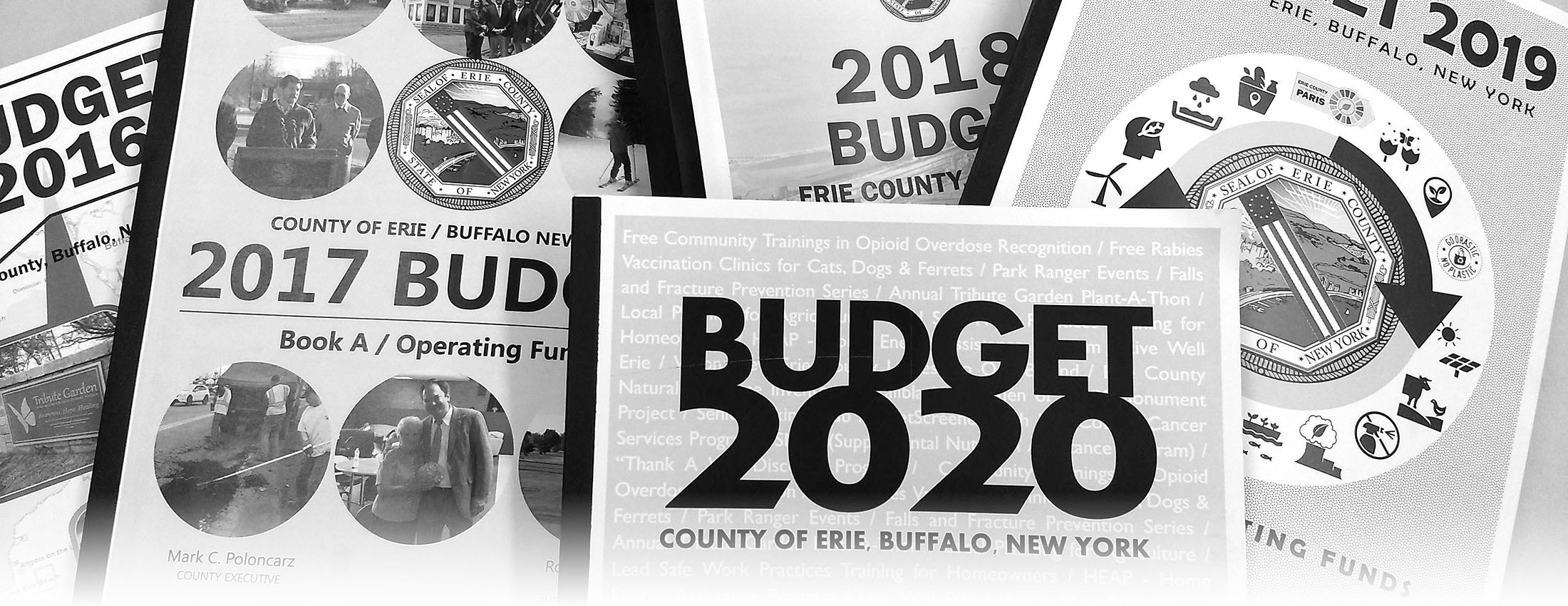
When Erie County Executive Mark Poloncarz announced his budget proposal for 2020, he devoted a third of his PowerPoint slides on how the county’s property tax rate would decrease. He included pictures of homes in Buffalo, West Seneca and the Town of Tonawanda that showed how the tax bills for homeowners there would drop by $5 or more.
So if the countywide tax rate has fallen to its lowest level in 15 years, how come so many residents saw their taxes go up when they received their bills in the mail this past week?
Except for five outlying communities, every city and town saw a higher tax rate.
Buffalo’s county tax rate went up by 5%. And residents in the Town of Lancaster saw their county tax rate rise by 12%, the highest among towns this year.
“It’s very confusing,” acknowledged Nancy Snyder, acting director of Erie County’s Real Property Tax Services, whose office fields a number of calls from confused and unhappy taxpayers this time of year.
To sort this out, here are some key numbers and concepts to keep in mind.
The county will collect $10 million more in property taxes this year than it did last year, due in part to more spending on things like construction projects and new, unfunded state mandates related to criminal justice reform and lead poisoning prevention.
That $10 million represents an increase of 3.45%. So property owners must chip more money into the county pot.
How much the county collects in property taxes is called the “tax levy.” The tax levy is a much better indicator than the tax rate of whether taxpayers will pay more or less in taxes.
Erie County’s tax levy has risen every year since 2004.
A property tax rate only reflects the dollar amount in taxes charged for every $1,000 of a property’s assessed value.
When the county executive and legislators talk about a lower county tax rate, they are referring to the “full value tax rate,” which is $4.71, down 13 cents from last year.
That sounds like a big decrease. After all, the county tax rate hasn’t fallen by that much in nearly 20 years.
But the “full value tax rate” is the rate the county would charge property owners assuming all homes are assessed at what they are really worth.
In reality, few properties have assessments that match their true market values.
Many local governments do not reassess their residents’ properties on a regular basis because it’s costly, time-consuming and often politically unpopular. In most communities, homes are worth more, and sell for more, than what they are assessed at by their city or town.
So the state calculates the gap, and communities typically use the state-issued “equalization rate” in their annual tax rate calculations.
For instance, the Town of Tonawanda has gone so long without reassessing its property values that the state now considers the town’s on-paper assessment of its property values to be roughly a third of what they’re really worth, based on home sale prices.
In 2019, the state set the town’s equalization rate at 35 – meaning that based on marketplace data, the state believed the city’s property assessments were at 35% of the properties’ actual values. That’s lower than it was the year before. As a result, the town’s tax rate is going up 5.7% this year.
When Poloncarz highlighted specific homes in Buffalo, West Seneca and the Town of Tonawanda during his press conference on the 2020 budget, indicating those homeowner tax bills would be lower this year, he acknowledged that he did not account for the state equalization rate. If he had, he would have discovered those homeowner tax bills weren’t going down.
They were going up.
How tax rates mislead
When leaders of thriving communities refuse to reassess property values for a long time, a disparity grows between a property’s government-assessed value and its true market value. In such communities, tax rate changes become a meaningless indicator of how much more or less a taxpayer must fork over in property taxes.
For instance, the Town of Elma has gone so long without reassessing its properties that it has an equalization of 4 – as in, the state considers homes in Elma to be assessed at only 4% of their true worth. For that reason, Elma’s county tax rate is $107.96 this year. That is the highest tax rate, by far, of any Erie County community.
Sounds bad, right?
But in reality, Elma’s county property tax bills are going down. The state considers Elma’s overall property values to be relatively unchanged, and because Elma’s state equalization rate remained the same, the decline in the county’s tax rate actually benefits those residents.
Cheektowaga, by comparison, has a county tax rate of $5.45 this year. That seems a lot better than Elma’s, but Cheektowaga’s state equalization rate fell from 93 to 85. So those residents saw their county tax rate grow by nearly 9%.
To complicate matters further, the county also tacks additional charges onto tax bills for certain community college fees and Erie County Board of Elections operations.
County leaders like Poloncarz point out that even with the tax levy increases, county taxes remain low, overall, compared with city, town and school tax bills. The county also remains under the state-imposed tax cap, has been awarded higher credit ratings over the last year, and preserved or expanded county services. The year-end county surplus for 2019 is expected to be roughly $8 million.
Last year, the surplus was much higher, leading some residents to complain they were overtaxed. But with county expenses continuing to grow and concerns about the fiscal stresses facing New York State, few local leaders have clamored for a tax levy reduction.
Published by The Buffalo News





